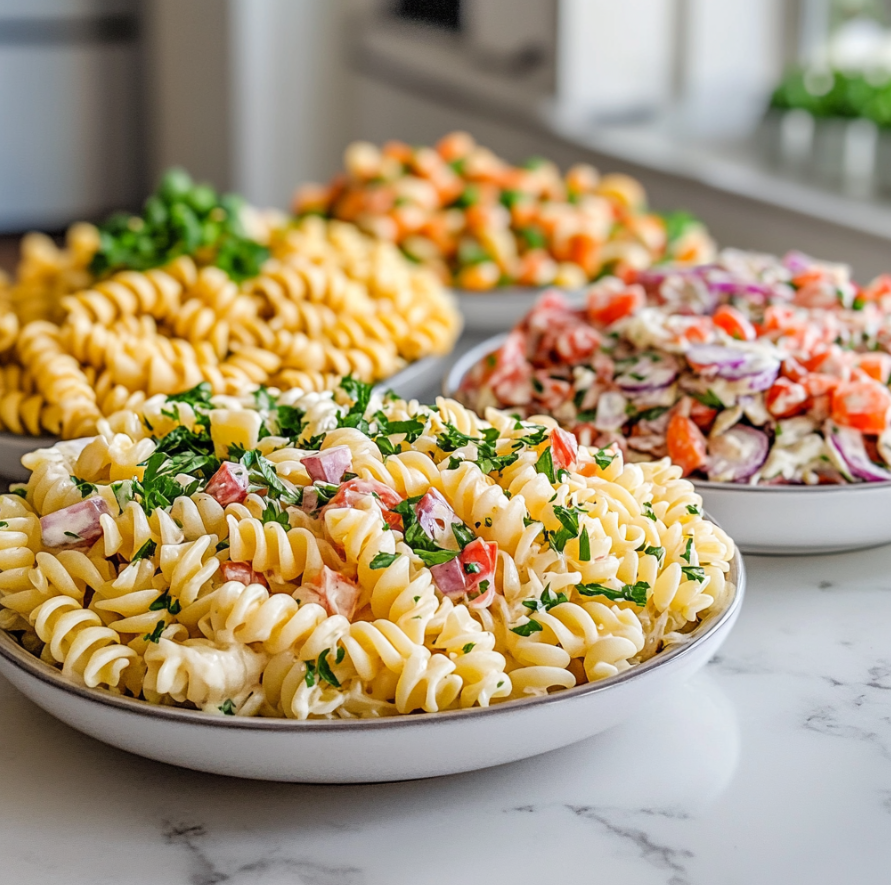Introduction
Pasta salad is a go-to dish for many occasions, offering versatility and flavor in every bite. However, achieving that perfect creamy texture can sometimes be a challenge. If your pasta salad turns out dry or lacks the desired creaminess, it can be frustrating. In this article, we’ll explore the reasons why your pasta salad might not be as creamy as you’d like and provide solutions to help you perfect this classic dish.

- Introduction
- Understanding the Role of Ingredients
- Mistake 1: Overcooking or Under-cooking Pasta
- Mistake 2: Using the Wrong Dressing Proportions
- Mistake 3: Not Properly Draining or Cooling Pasta
- Mistake 4: Not Letting the Salad Sit Before Serving
- Mistake 5: Adding Dressing Too Early
- Advanced Techniques for Ensuring Creaminess
- Frequently Asked Questions (FAQ)
Understanding the Role of Ingredients
The ingredients you choose have a significant impact on the creaminess of your pasta salad. Key components such as the type of pasta, dressing ingredients, and add-ins all play a role in the final texture and taste.
- Pasta Type: The shape and size of your pasta can greatly influence how well it absorbs the dressing. Short, sturdy shapes like rotini, penne, or bowties are ideal because they hold onto the dressing better. Avoid long, thin noodles like spaghetti, which don’t capture the dressing as effectively.
- Dressing: The dressing is the heart of a creamy pasta salad. Achieving the right balance between creamy ingredients like mayonnaise, yogurt, or sour cream and acidic elements such as vinegar or lemon juice is essential. Too much mayonnaise can make the salad greasy, while too little can result in a dry texture.
- Add-ins: Vegetables, proteins, and other mix-ins can affect the overall creaminess of your salad. Ingredients like cucumbers, tomatoes, and bell peppers can release moisture, which may dilute the dressing if not managed properly. To keep your salad creamy, consider using less watery vegetables or adding them just before serving.
For more detailed guidance on crafting the perfect pasta salad, you might want to check out pasta salad mistakes to avoid to ensure your dish turns out just right.
Mistake 1: Overcooking or Under-cooking Pasta
The texture of your pasta is crucial for achieving a creamy salad. Overcooked pasta tends to absorb too much dressing, leading to a dry salad. Conversely, undercooked pasta won’t adhere well to the dressing, resulting in a dish that lacks cohesion.
To ensure your pasta is cooked perfectly, aim for an al dente texture—firm to the bite but fully cooked. This texture allows the pasta to absorb just the right amount of dressing without becoming mushy. Start testing your pasta a minute or two before the package’s recommended cooking time to achieve the perfect consistency.
If you’re struggling with keeping your pasta salad creamy, consider these tips on preventing dryness in pasta salad.

Mistake 2: Using the Wrong Dressing Proportions
The balance of ingredients in your dressing is key to maintaining creaminess. Using too much mayonnaise can make the salad heavy, while too little can leave it dry. Striking the right balance between creamy ingredients and acidic components like vinegar or lemon juice is essential for a well-rounded dressing.
To keep your pasta salad creamy, consider adding a splash of olive oil to your dressing. This not only thins out the mayonnaise but also adds a smooth, velvety texture that enhances the overall creaminess. Additionally, incorporating yogurt or sour cream can provide a tangy flavor that complements the richness of the mayonnaise.
Adjusting the proportions of your dressing ingredients based on the type of pasta and add-ins you’re using can help maintain moisture and prevent the salad from drying out over time. For additional dressing ideas, you might also explore the BLT pasta salad recipe for inspiration.

Mistake 3: Not Properly Draining or Cooling Pasta
The way you handle your pasta after cooking is just as important as how you cook it. Improperly drained or cooled pasta can cause your salad to become watery or dry. If the pasta isn’t drained thoroughly, the excess water can dilute the dressing, making it less creamy.
After cooking, drain your pasta well and let it cool completely before mixing it with the dressing. Spread the pasta out on a baking sheet to cool evenly, and avoid rinsing it under cold water, which can remove the starches that help the dressing cling to the pasta.
Proper cooling is essential to maintaining the creamy consistency of your pasta salad. By allowing the pasta to cool naturally, you preserve its ability to absorb the dressing without becoming soggy.
Mistake 4: Not Letting the Salad Sit Before Serving
Allowing your pasta salad to sit for a while before serving is important for letting the flavors meld together and ensuring the creaminess is well-distributed. When the salad sits, the pasta absorbs the dressing, which can enhance the texture and flavor. However, if it sits too long, it might dry out, so it’s crucial to strike the right balance.
Let your pasta salad sit in the refrigerator for at least 30 minutes before serving. This resting time helps the flavors develop and allows the dressing to thicken slightly, giving the salad a richer, creamier texture. If the salad seems dry after sitting, mix in a little extra dressing just before serving to freshen it up.
Mistake 5: Adding Dressing Too Early
One common mistake is adding the dressing too early. When you mix the dressing with the pasta while it’s still warm, the pasta will absorb the dressing more quickly, often leading to a dry salad by the time it’s served.
To avoid this, let the pasta cool completely before adding the dressing. If you’re preparing the salad in advance, consider saving a portion of the dressing to mix in just before serving. This will help maintain the salad’s creaminess and prevent it from drying out.
Timing is everything when it comes to ensuring your pasta salad remains creamy and delicious.
Advanced Techniques for Ensuring Creaminess
If you want to elevate your pasta salad to the next level, consider these advanced techniques:
- Emulsifiers: Adding a small amount of mustard or egg yolk to the dressing can help stabilize it, preventing it from separating and maintaining a creamy consistency.
- Adding Cream or Milk: For an extra creamy texture, consider adding a splash of cream or milk to the dressing. This works especially well in salads with mayonnaise-based dressings.
- Cheese or Eggs: Incorporating ingredients like cheese or hard-boiled eggs can enhance the richness and creaminess of your salad. Grated Parmesan or crumbled feta are great options for adding both flavor and texture.
These techniques will help you achieve a rich and creamy pasta salad that stays delicious, even after sitting for a while.
Frequently Asked Questions (FAQ)
Why does my pasta salad dry out overnight?
Pasta salad can dry out overnight because the pasta continues to absorb the dressing. To prevent this, save some dressing to mix in just before serving or add a bit more liquid to the salad before refrigerating it.
Can I make pasta salad creamy without mayonnaise?
Yes, you can use alternatives like yogurt, sour cream, or a combination of olive oil and vinegar to achieve a creamy texture without mayonnaise.
What’s the best way to fix dry pasta salad?
If your pasta salad is dry, try adding more dressing or a splash of olive oil or cream. Mix thoroughly to redistribute the moisture and restore creaminess.
How long can creamy pasta salad be stored?
Creamy pasta salad can be stored in an airtight container in the refrigerator for 3-5 days. However, it’s best to freshen it up with a bit of extra dressing before serving.
Why does my pasta salad separate after chilling?
Pasta salad may separate after chilling if the dressing isn’t properly emulsified. To prevent this, consider adding a small amount of mustard or egg yolk to the dressing, which helps keep it stable.

